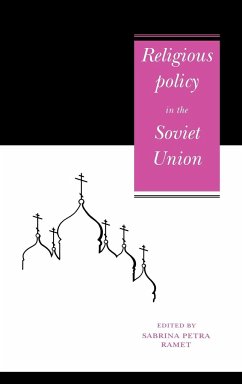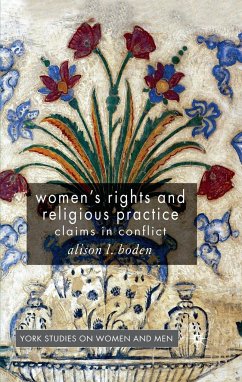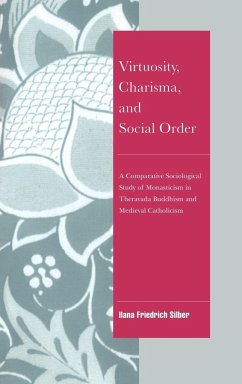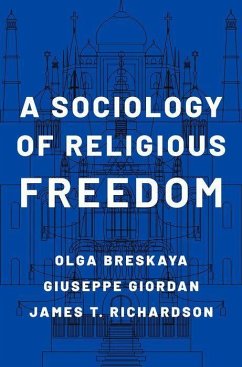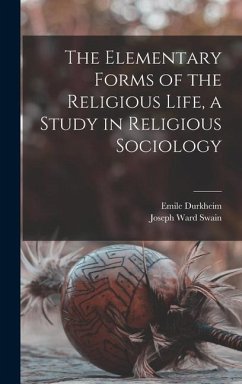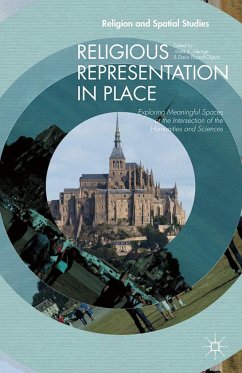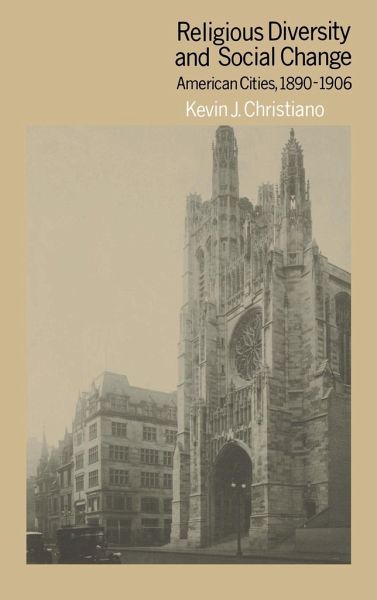
Religious Diversity and Social Change
American Cities, 1890 1906

PAYBACK Punkte
52 °P sammeln!
Floods of immigration and rapid industrialization and urbanization in America at the turn of the century set in motion the transformation of many long-established institutions. This book examines specific ways in which cultural changes affected the structure of the religious establishment. Statistical models are applied to United States Census data from 1890 and 1906 on city and church populations, revealing connections between the growth of cities, the increase in literacy, and the formation of ethnic subcommunities that led to a new level of religious diversity. The author analyzes evidence ...
Floods of immigration and rapid industrialization and urbanization in America at the turn of the century set in motion the transformation of many long-established institutions. This book examines specific ways in which cultural changes affected the structure of the religious establishment. Statistical models are applied to United States Census data from 1890 and 1906 on city and church populations, revealing connections between the growth of cities, the increase in literacy, and the formation of ethnic subcommunities that led to a new level of religious diversity. The author analyzes evidence of growing competition among churches and of a level of individual commitment to congregations, demonstrating that the patterns of religious community established at the turn of the century provided the basis for the current denominational system. The author further analyzes the relationship of religious diversity to urban secularization, as well as its role as a catalyst to sectarian conflict. In offering a quantitative assessment of issues central to the history of American religion, this book is a significant contribution to the study of religion in America.
Table of contents:
List of tables and figures; Preface; 1. 'As slavery never did': American religion and the rise of the city; 2. 'Numbering Israel': United States Census data on religion; 3. 'An infinite variety of religions': the meaning and measurement of religious diversity; 4. 'A motley of peoples and cultures': urban populations and religious diversity; 5. 'A new society': industrialization and religious diversity sociological approaches to industrialization and religious diversity; 6. 'No fast friend to policy or religion': literacy and religious diversity; 7. 'God's Bible at the Devil's girdle': religious diversity and urban secularization; 8. 'If the religion of Rome becomes ours': religious diversity, subcultural conflict, and denominational realignment; 9. 'Matters merely indifferent”: religious diversity and American denominationalism' Appendixes; Notes; References; Index.
This book examines specific ways in which cultural changes affected the structure of the religious establishment. Statistical models are applied to United States Census data from 1890 and 1906 on city and church populations, revealing connections between the growth of cities, the increase in literacy, and the formation of ethnic subcommunities that led to a new level of religious diversity.
This book examines specific ways in which cultural changes affected the structure of the religious establishment.
Table of contents:
List of tables and figures; Preface; 1. 'As slavery never did': American religion and the rise of the city; 2. 'Numbering Israel': United States Census data on religion; 3. 'An infinite variety of religions': the meaning and measurement of religious diversity; 4. 'A motley of peoples and cultures': urban populations and religious diversity; 5. 'A new society': industrialization and religious diversity sociological approaches to industrialization and religious diversity; 6. 'No fast friend to policy or religion': literacy and religious diversity; 7. 'God's Bible at the Devil's girdle': religious diversity and urban secularization; 8. 'If the religion of Rome becomes ours': religious diversity, subcultural conflict, and denominational realignment; 9. 'Matters merely indifferent”: religious diversity and American denominationalism' Appendixes; Notes; References; Index.
This book examines specific ways in which cultural changes affected the structure of the religious establishment. Statistical models are applied to United States Census data from 1890 and 1906 on city and church populations, revealing connections between the growth of cities, the increase in literacy, and the formation of ethnic subcommunities that led to a new level of religious diversity.
This book examines specific ways in which cultural changes affected the structure of the religious establishment.





